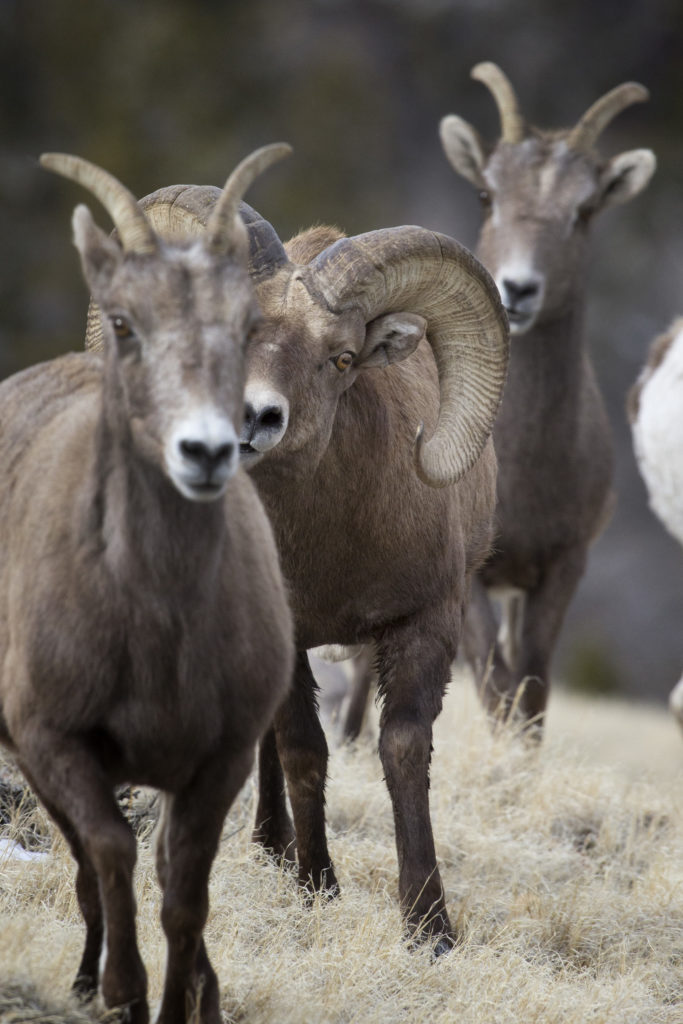– written by Aly Courtemanch, Wildlife Biologist, Wyoming Game and Fish Department
It’s that time of year again when bighorn sheep migrate from their summer ranges high in the mountains to the lower elevation valleys to spend the winter. Miller Butte on the National Elk Refuge is a well-known wintering area for a portion of the Jackson Bighorn Sheep Herd. The herd numbers approximately 400 sheep; about 80 of those spend the winter on the Elk Refuge. The bighorn sheep breeding season, or rut, occurs in late November and December. The Elk Refuge Road is one of the best places to observe this natural spectacle. Bighorn sheep have the latest rut of all of the ungulates in Jackson Hole because they have one of the shortest gestation (pregnancy) lengths (approximately 6 months).
A common sight near Miller Butte in the winter is bighorn sheep licking or eating dirt on the road, as well as licking passing cars. Bighorn sheep, like other ungulates, have a strong desire for salt. They are often seen at natural salt seeps in the mountains, ingesting crumbly rock and dirt. Because of this, bighorn sheep are attracted to road sides during the winter because we use various mixtures of sand and salt compounds (usually sodium chloride or magnesium chloride) to de-ice roads. Bighorn sheep on Miller Butte have also learned that cars and trucks often have salt encrusted on their bumpers and wheels, which makes for a tasty treat. The types of salt commonly found on vehicles and on the Elk Refuge Road are not toxic to bighorn sheep and don’t pose a direct threat to their health. However, this unnatural behavior causes bighorn sheep to congregate in close contact with one another and licking cars exposes bighorn sheep to others’ saliva, which can cause disease transmission. Recent research in this herd has shown that some sheep are carriers of pneumonia-causing bacterial pathogens. These bacteria are passed from sheep to sheep via saliva, mucus, and droplets in the air. One sick sheep licking a car could easily infect other sheep that are licking the same car, which could lead to disease spreading quickly through the whole group. You can help prevent this behavior by only stopping in designated pull-outs, continuing to drive slowly through groups of bighorn sheep that are congregated on the road, and educating other visitors.
The last pneumonia outbreak in the Jackson Bighorn Sheep Herd occurred in 2011 and 2012, when approximately 30% of the sheep died. Symptoms of pneumonia include severe coughing and runny nose. In recent years, a few sheep have exhibited these symptoms at Miller Butte, but a herd-wide outbreak has not occurred. We appreciate receiving reports from Nature Mappers and the public of any sheep they observe coughing. A description of how many sheep and their ages/sexes (ram, ewe, or lamb) is very helpful, as well as a video if possible. Please report your observations of any sick sheep to Jackson Hole Wildlife Foundation or Wyoming Game and Fish Department.

Photographer Credit: Mark Gocke
